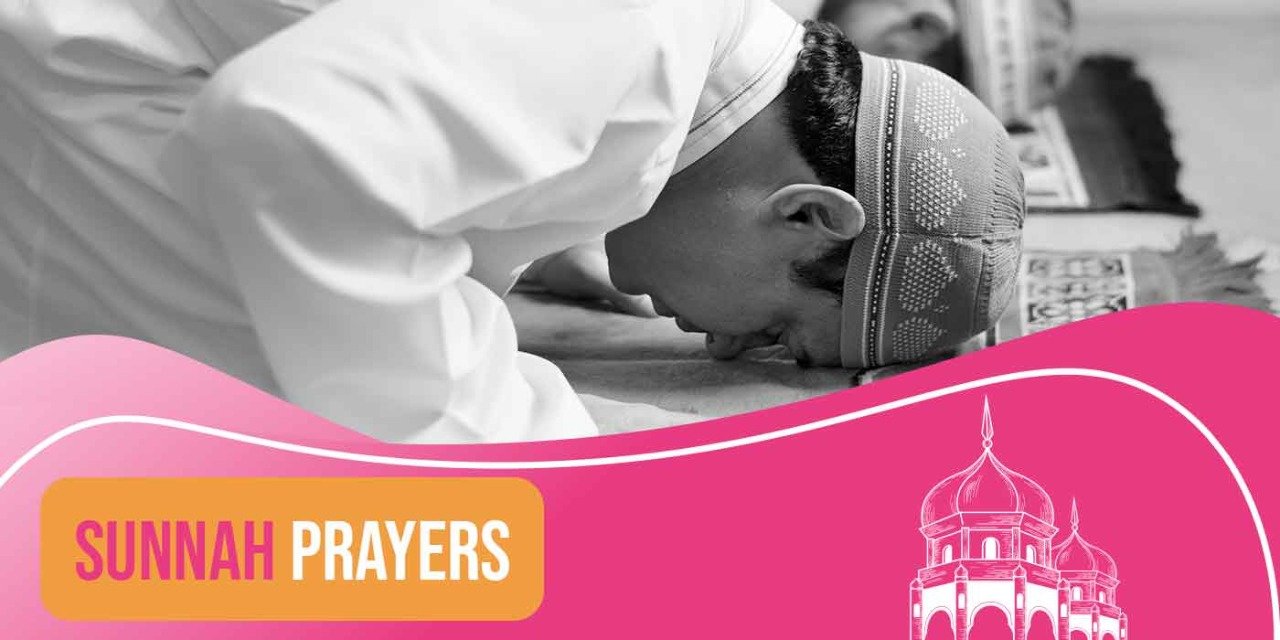Sunnah prayers:
The sunnah prayers are performed or taken action between Ishah and Witr during Ramadan; Tahajjud is performed between Isah and Fajr prayers; Duha is performed an hour after/before sunrise/highest point of Sun, Awwabin prayers are performed between Maghreb and Isha.
let us know more about Sunnah Prayers in Islam.
Sunnah Islam:
- In Islam, the sunnah is the tradition of the Islamic prophet Muhammed that constitutes a model for Muslims to follow. The Sunnah is what all the Muslims during the time of Master Muhammad, Alla’s Prayers and peace be upon him, evidently saw, followed, and passed on to the next generations.
- According to classical Islamic theories, the sunnah is documented in the hadith (the verbally transmitted record of the teaching, deeds and sayings, silent permissions or disapprovals of Muhammad), and along with the Quran (the book of Islam), is the divine revelation delivered through Muhammed that make up the primary sources of Islamic law and belief/theology.
If you like to keep reading about sunnah prayers, please scroll down to know more about Sunnah Prayers in Islam.
Quran and sunnah:
- Muslims believe that Quran is the words of Allah that have been delivered through Archangel Gabriel to the final Prophet Muhammed May Peace be upon him. it took around 23 years to deliver the whole message of Allah that was gathered in 30 parts of the holy book of Islam, starting from Ramadan when Master Muhammad was 40 years old.
- There is also a part of the Quran that Muslims memorize and read. Hafza is a term that Muslims use for those who Memorize the Quran entirely. As a result, the Hafza becomes knowledgeable, advised, and has other religious disputes. Hafiz is highly respected by society with titles such as Professor (Teacher), Maulana (Teacher), and sometimes Sheikh.
- Muslims believe that those who memorize the Quran and work with it will be paid by Allah and honor him greatly.
- Ensuring an ideal recall of all verses learned requires continuous practice.
- Keeping the Quran was important for Muslims in the past and present as well.
- Every year, thousands of students master the Quran and complete the book with interpretation and memorization as well. Perhaps the Quran is the only book, religious or secular, that millions of people have saved entirely.
If you like to keep reading about sunnah prayers, please scroll down.
Hadith Quran:
- The Hadith refers to what the majority of Muslims believe to be a record of the words, actions, and silent approval of the Islamic prophet Muhammed as transmitted through chains of narrators.
- In other words, the hadith transmitted reports attribution to what Muhammed said and did. Hadith has been described by some as the backbone of Islamic civilization, and many Muslims consider Hadith the second source of Islam after Quran.
- Most Muslims believe that the authority of the hadith scripture comes from the Quran Most Muslims believe that scriptural authority for hadith comes from the Quran. While the number of verses about the law in the Quran is relatively few, hadith are considered on everything from details of religious obligations such as wudu ablutions or salat prayer), to the correct form of salutations and the importance of benevolence to slaves.
- Different collections of hadith would come to differentiate the different branches of the Islamic faith. Some Muslims believe that Islamic guidance should be based on the Quran only, thus rejecting the authority of hadith are fabrications created in the 8thand 9th century AD, and which are falsely attributed to Muhammed, because some hadith include questionable and even contradictory statements, the authentications of hadith become a major field of study in Islam.If you like to keep reading about sunnah prayers, please scroll down to know more about Sunnah Prayers in Islam.
12 Sunnah Prayers:
- First of all, after washing for prayer by performing the ritual ablution (wudu) a believer must renew their innermost intention thus purifying their prayer for the sake of Allah.
- An intention Niyyah is not to be verbal but rather it is made in the heart. Example: you intended in your heart to pray 4 units (Rakat) to start your prayers. The Makah begins when the worshipper initiates the salah with the words “Allah is the greatest” (Allah -hu-Akbar) this is known in Arabic as the Takbir (the glorification of God).
- Takbir must be said at the start of the salah, or the prayers are invalidated. the individual will observe the standing position while reciting the “Dua al stitch” followed by the opening chapter of the Quran (Al-Fatiha) NOTICE: reciting the Al-Fatiha or making a major mistake in the tajweed, then they must redo the prayer from the start, followed by a personal selection of chosen verses or chapter which the worshipper is free to choose to recite for themselves.
- The second part of rakah involves the worshipper making another Takbir then bowing to a 90-degree angle, placing their hand on their knees with their feet kept shoulder-width apart, eyes are meant to be focused in between your feet or around the area, and bowing in humble submission as if awaiting Allah’s command. In this situation, words are spoken: “Allah blessed the most wonderful things to be silent as a ritual of praise.
- The third movement of the Rakah is the return from bowing to the standing position before, with the praise of Allah on your tongue, descending in full prostration on the ground. In prostration, the worshipper’s forehead and nose are flat and placed on the floor with the palm of their hand placed shoulder-width to the right and left of their ears. while going in the “sujud” or the prostration position, one must remember that first, knees should touch the ground, then his hands, then his nose, and at last forehead.
- The worshipper’s elbows, forehead, and chest are then raised off the floor. during this position, the words “Glory be to Allah the Almighty” are repeated with contemplation as a form of ritual praise.
- The Islamic prophet Muhammad taught his disciples that “the closest a subject gets to their Allah is when in prostration. The fourth movement is for the worshipper to return from the prostration into a sitting position with their legs folded flatly under their body.
- While getting up from prostration, one should follow the order opposite to the order followed during prostration, he must first raise his forehead, then his nose, then his hands, and finally his knees. In this position, they would invoke believers before descending into the second prostration. This ends with a single unit of prayers known in Arabic as Alrakah, followed either by a second “rakah” if prayers so require or by proceeding with the termination of prayers by delivery.
Hope you enjoyed our article about Sunnah Prayers in Islam.
- Murouj Academy is an Islamic Academy for Islamic studies and other Islamic courses. As an online Islamic academy, Murouj provides many Islamic courses such as the Quran memorization course, standard Arabic course, Quran tajweed, Ijaza recitation course, and Islamic Studies course.
- Do you like Sunnah Prayers in Islam? Sunnah Prayers in Islam are not the end Check more Blogs.





